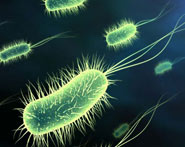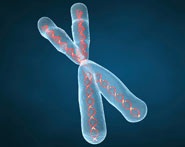


 النبات
النبات
 الحيوان
الحيوان
 الأحياء المجهرية
الأحياء المجهرية
 علم الأمراض
علم الأمراض
 التقانة الإحيائية
التقانة الإحيائية
 التقنية الحيوية المكروبية
التقنية الحيوية المكروبية
 التقنية الحياتية النانوية
التقنية الحياتية النانوية
 علم الأجنة
علم الأجنة
 الأحياء الجزيئي
الأحياء الجزيئي
 علم وظائف الأعضاء
علم وظائف الأعضاء
 الغدد
الغدد
 المضادات الحيوية
المضادات الحيوية|
Read More
Date: 25-12-2020
Date: 25-12-2020
Date: 2025-03-27
|
Although taxonomic studies of the virus have indicated an African origin, yellow fever was first recognized during an outbreak in the Americas in 1648. The current consensus is that the virus was introduced into the new world through mosquito-infested slave trading vessels from West Africa. Epidemics affected the USA including the Philadelphia epidemic of 1793 that killed one-tenth of the city’s population. Sanitary measures including the introduction of piped water inadvertently helped to diminish transmission of the disease. Advances in the early twentieth century, which included the identification of the vector, isolation of the virus, and development of a vaccine, all served to curtail the prevalence of this disease. However, more than 70 years after the development of an effective vaccine, areas of endemic transmission continue to exist with the periodic recurrence of outbreaks.
Yellow fever virus belongs to the genus Flavivirus . Flaviviruses are small spherical positive-sense single-stranded viruses with an envelope containing lipid and two envelope proteins, E and M. The genome of the prototype yellow fever virus strain 17D-204 contains 10,862 nucleotides, composed of a 5′-terminal type I cap structure, a short 5′ noncoding region, a single open reading frame of 10,233 nucleotides, and a 3′ noncoding region. The E protein exhibits important biologic properties including attachment to host cell receptors, endosomal membrane fusion, and display of sites mediating hemagglutination and viral neutralization.
Yellow fever ranges in severity from a nonspecific flu-like-type illness to a hemorrhagic fever that is fatal in 50 % of cases. A significant percentage of infections go undetected. The incubation period ranges from 3 to 6 days and is followed by the abrupt presentation of fever, headaches, and muscle aches accompanied by physical findings such as injected conjunctiva, facial flushing, and leukopenia. Most cases resolve after this phase, but some go on to develop, after being free of fever for hours or days, high fever, lumbosacral pain, headaches, abdominal pain, and somnolence. This is a severe multi systemic illness dominated by icteric hepatitis and hemorrhagic diathesis with prominent gastrointestinal bleeding, hematemesis, epistaxis, petechiae, and purpuric hemorrhages.
Yellow fever vaccine is a live-virus vaccine which has been used for several decades. A single dose protects against disease for 10 years or more. Infants, toddlers, pregnant women, and patients with HIV may not have as robust a response to the vaccine.
Adverse reactions to the yellow fever vaccine are very rare but in some instances can be severe. The more severe reactions are lumped into two syndromes known as viscerotropic adverse reactions and neurotropic adverse reactions [ 1]. The vaccine is contraindicated in those with allergy to the vaccine components, age less than 6 months, symptomatic HIV infection or CD4 count less than 200, thymic disorder-associated immune dysfunction, and other immunosuppressive diseases and therapies.
Yellow fever vaccine is recommended for persons aged ≥9 months that are traveling to or living in areas at risk for yellow fever virus transmission in South America and Africa. A single dose given every 10 years is considered effective for people who are traveling to areas of high endemicity. Certain countries require record of immunization before entry is allowed including proof of vaccination by documentation on an “International Certificate of Vaccination or Prophylaxis” for yellow fever .
References
-------------
[1] Rafferty E, Duclos P, Yactayo S, Schuster M (2013) Risk of yellow fever vaccine-associated viscerotropic disease among the elderly: a systematic review. Vaccine 31:5798–5805



|
|
|
|
لشعر لامع وكثيف وصحي.. وصفة تكشف "سرا آسيويا" قديما
|
|
|
|
|
|
|
كيفية الحفاظ على فرامل السيارة لضمان الأمان المثالي
|
|
|
|
|
|
|
شعبة مدارس الكفيل: مخيَّم بنات العقيدة يعزِّز القيم الدينية وينمِّي مهارات اتخاذ القرار لدى المتطوِّعات
|
|
|